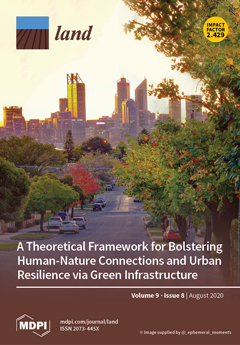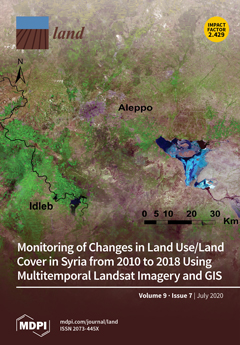Using the Web of Science database, 1498 research articles published between 1900 and 2019 on the subject of farmland abandonment were retrieved. With the help of the SciMAT tool, a theme strategic diagram, overlay map and evolution map represented by keywords were constructed, and the strategic…
The process of population concentration in cities is a worldwide phenomenon—not yet finished—which has led to a widespread rural exodus and abandonment of rural areas. In Spain it occurred very abruptly from 1960, leaving numerous population centers abandoned in the northern half of the country…
Conservationists recognize the value of protected area (PA) systems, with adequate coverage, ecological representation, connection, and management to deliver conservation benefits. Yet, governments primarily focus on coverage, disregarding quantification of the other criteria. While recent…
Cultural ecosystem services are gaining increasing attention in the scientific literature, despite the conceptual and methodological difficulties associated with their assessment. We used a participatory GIS method to map and assess three cultural ecosystem services, namely, (a) outdoor…
Historic urban landscapes (HULs) are composed of layers of history and memories that are embedded in physical monuments, buildings, and memorials. Physical built fabric stores both personal and cultural memory through long association with communities. Rapid changes due to demolition and…
Green infrastructure (GI) is a strategic planning approach that can contribute to solutions for ecological, social, and environmental problems. GI also aims to conserve natural and semi-natural landscapes and enhance ecological networks. Within the scope of spatial planning, urban and rural…
An increasing number of African States are recognizing customary land tenure. Yet, there is a lack of research on how community rights are recognized in legal and policy frameworks, how they are implemented in practice, and how to include marginalized groups. In 2018–2019, we engaged in…
During the last decade, the concept of urban resilience has been increasingly implemented in urban planning, with the main aim to design urban development strategies. Urban resilience is a multi-dimensional and dynamic concept. When applied to urban planning, it consists of studying cities as…
Forest conversion to agriculture can induce the loss of hydrologic functions linked to infiltration. Infiltration-friendly agroforestry land uses minimize this loss. Our assessment of forest-derived land uses in the Rejoso Watershed on the slopes of the Bromo volcano in East Java (Indonesia)…
Pan evapotranspiration (E) is an important physical parameter in agricultural water resources research. Many climatic factors affect E, and one of the essential challenges is to model or predict E utilizing limited climatic parameters. In this study, the performance of four different artificial…
Connectivity and wildlife corridors are often key components to successful conservation and management plans. Connectivity for wildlife is typically modeled in a static environment that reflects a single snapshot in time. However, it has been shown that, when compared with dynamic connectivity…
A singular and modest activist action, a temporary park created in San Francisco, grew into the global urban Park(ing) Day (PD) phenomenon. This tactical urbanism event not only expanded to be annually celebrated in thousands of parking lots all over the world but became an inspiration for urban…



